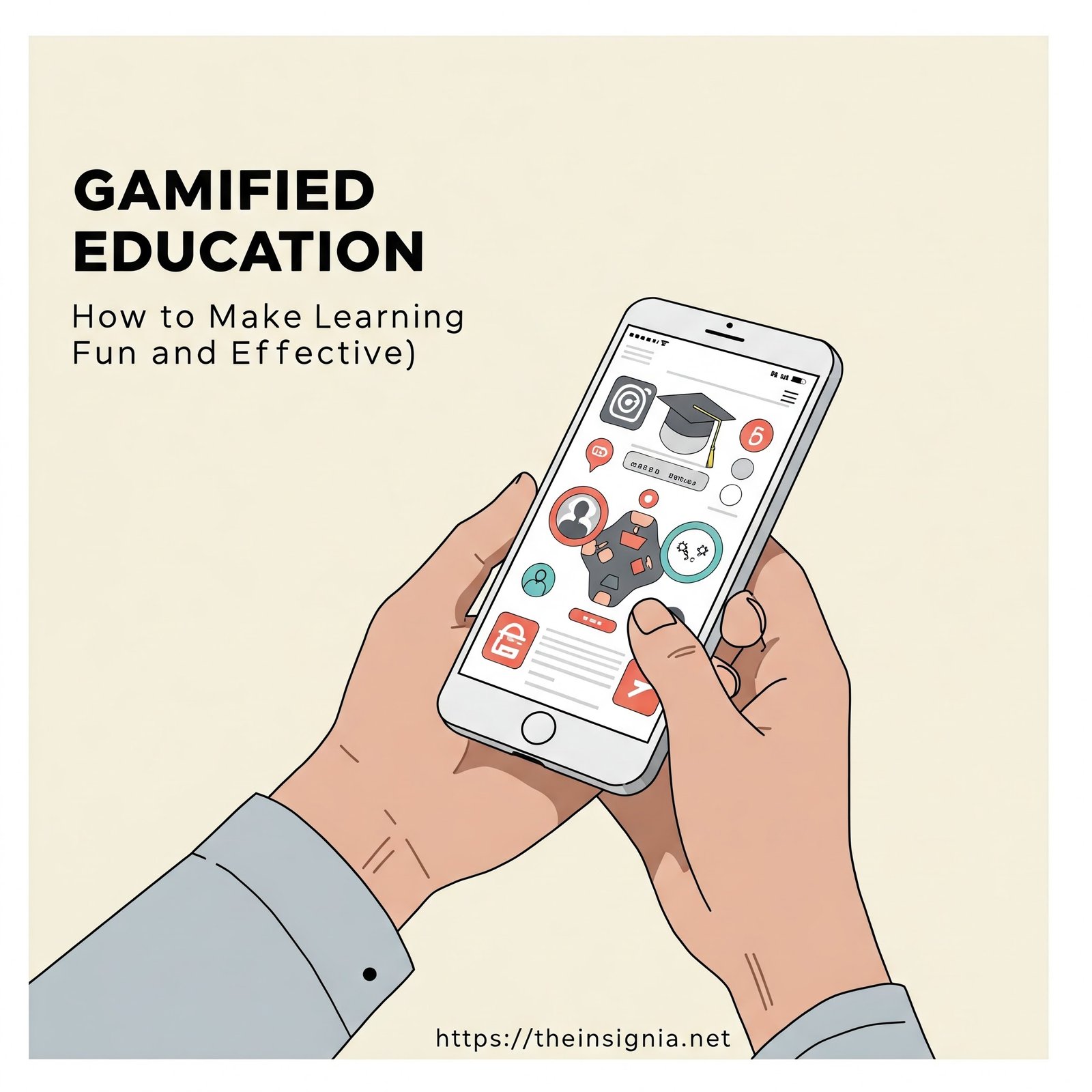
In an era where attention spans are increasingly fleeting, Gamified Education emerges as a powerful tool to captivate learners and enhance knowledge retention. By integrating game mechanics into educational settings, educators can transform mundane lessons into engaging experiences. Consequently, this approach not only makes learning enjoyable but also fosters a deeper understanding of complex concepts. Therefore, implementing effective gamification strategies is crucial for maximizing educational outcomes.
The Power of Game Mechanics in Gamified Education
Game mechanics, such as points, badges, leaderboards, and challenges, create a sense of achievement and competition. Furthermore, these elements motivate learners to actively participate and persevere through difficult tasks. For instance, a study published in the “Computers & Education” journal revealed that gamified learning environments significantly improve student engagement and motivation. Moreover, incorporating storytelling and narrative elements can further enhance the immersive experience. As a result, Gamified Education transforms learning from a passive activity into an interactive adventure.
Key Points:
- Game mechanics drive engagement and motivation.
- Points and badges provide a sense of accomplishment.
- Leaderboards foster healthy competition.
- Challenges encourage problem-solving skills.
- Storytelling enhances the learning experience.
Designing Effective Gamified Learning Experiences
Effective gamification requires careful planning and implementation. Firstly, it’s essential to align game mechanics with learning objectives. Secondly, providing meaningful feedback and rewards is crucial for maintaining learner motivation. Thirdly, incorporating elements of choice and autonomy empowers learners to take ownership of their learning journey. Therefore, when developing Gamified Education strategies, prioritize creating a balanced and engaging experience.
Benefits of Gamified Education
Gamified Education offers numerous benefits, including increased engagement, improved knowledge retention, and enhanced problem-solving skills. Additionally, it fosters a positive learning environment where learners feel motivated to explore and experiment. For example, educational platforms like Duolingo use gamification to teach languages effectively. Also, gamification can personalize learning experiences, catering to individual learning styles and paces. Therefore, it is a versatile tool for diverse educational settings.
Enhancing Engagement and Motivation
One of the primary advantages of gamification is its ability to boost learner engagement. By transforming learning into a game, educators can tap into learners’ intrinsic motivation. Furthermore, the use of immediate feedback and rewards reinforces positive behaviors. Consequently, this leads to a more enjoyable and effective learning experience. Thus, when considering innovative educational approaches, Gamified Education stands out as a powerful solution.
Key Points:
- Increased learner engagement and motivation.
- Improved knowledge retention and recall.
- Enhanced problem-solving and critical thinking skills.
- Personalized learning experiences.
- Positive and interactive learning environment.
Implementing Gamified Education in the Classroom
Implementing gamification in the classroom involves integrating game elements into lesson plans and activities. For example, educators can use online platforms and apps that incorporate game mechanics. Furthermore, they can create classroom challenges and competitions to encourage participation. Additionally, providing opportunities for collaboration and teamwork can enhance the social aspect of learning. Therefore, when implementing Gamified Education, focus on creating a supportive and interactive learning environment.
FAQ
- What are the key elements of gamification in education?
- Points, badges, leaderboards, challenges, and storytelling.
- How does gamification improve knowledge retention?
- By making learning engaging and interactive.
- Can gamification be used in all subjects?
- Yes, it can be adapted to various subjects and learning objectives.
- What are some examples of gamified education platforms?
- Duolingo, Khan Academy, and Classcraft.
- How do I create effective gamified learning experiences?
- Align game mechanics with learning objectives and provide meaningful feedback.
In conclusion, Gamified Education offers a powerful approach to transforming learning into an engaging and effective experience. By integrating game mechanics and interactive elements, educators can captivate learners and foster a deeper understanding of complex concepts. Ultimately, this approach not only enhances knowledge retention but also cultivates a lifelong love for learning.
For Further Reading:
- Computers & Education Journal: https://www.journals.elsevier.com/computers-and-education
- Duolingo: https://www.duolingo.com/
#GamifiedEducation, #LearningFun, #EducationalGames, #InteractiveLearning, #EdTech, #StudentEngagement

